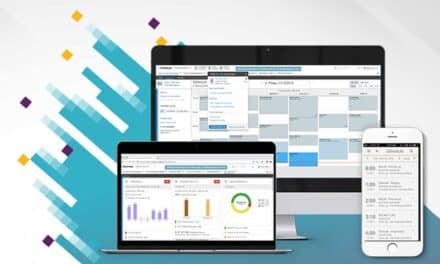Many practices are only using a fraction of their software’s potential—these tips can help you tap into the rest.
By Jessie Gainor
Orthodontic practices invest heavily in technology, yet many still operate inefficiently because they underutilize the tools they already have. Whether on the clinical or business side, overlooked features, disconnected systems, and underused data are costing practices time, efficiency, and revenue. Two orthodontic industry experts say there’s opportunity sitting right inside your existing systems—you just have to know how to unlock it.
You’ve Bought the Software—Now What?
Technology adoption is rarely the issue. Most orthodontic practices have purchased a practice management system, a patient communication platform, a digital treatment presentation tool, and, in many cases, a suite of clinical or remote monitoring technologies. However, according to Allison Parks Hale, chief operations officer at Parks Orthodontics in Yorktown, Va, owning the software is only step one.
“The problem isn’t that orthodontists aren’t buying technology—it’s that they aren’t fully using what they already have,” Hale explains. “We’ve got this platform that does one thing, and another that does something else, but none of them talk to each other.”
This lack of integration forces practices to manage multiple disconnected tools, often requiring staff to switch between systems, re-enter data, and manually reconcile information. Over time, this not only wastes valuable staff time but also increases the likelihood of errors and lost information.
Integration Remains the Biggest Roadblock
The lack of interoperability between platforms is one of the biggest pain points for practices trying to maximize their technology. Orthodontic Clinical Consultant Andrea Cook, who works with orthodontic teams nationwide on clinical systems and workflows, says this is a common frustration she hears from her clients.
“There’s no unicorn system that pulls everything together,” Cook says. “Practices have to hop between different technologies, and it’s easy for things to get lost or ignored.”
Both Hale and Cook acknowledge that some software vendors restrict data sharing, limiting practices’ ability to fully integrate different tools. Whether it’s for competitive reasons or due to privacy regulations like HIPAA, these data silos make it difficult for practices to streamline their operations.
The Hidden Costs of Underutilized Features
Hale points to several examples of underutilization, starting with patient-facing tools. Many practice management systems offer online scheduling, digital forms, text reminders, and payment portals—but these features often go unused or are poorly implemented.
“When patients have to call the office just to update their credit card or schedule an appointment, that’s a missed opportunity,” says Hale. “These systems already have automation built in, but practices aren’t always setting them up or maintaining them.”
On the clinical side, Cook frequently sees practices failing to use their practice management software to track key performance metrics, such as the percentage of patients exceeding their estimated completion dates.
“I ask practices for these numbers all the time, and 95% of the time, they will say, ‘I don’t know’,” says Cook. This lack of oversight leads to operational problems like overbooked schedules, increased patient wait times, and reduced treatment efficiency.
Data Is Only Useful if You Act on It
Both experts emphasize that generating reports is not enough—you have to do something with the data. Cook recommends practices regularly run and review reports on patient flow, treatment efficiency, emergency visits, and overestimated completion date.
“If you’re going to run these basic reports, and that’s the end of it, don’t even bother,” Cook says. “You need to dig into the data, understand it, evaluate it, and implement changes that are going to make your number swing whichever way you want.”
However, analyzing data takes time—a resource that’s often in short supply. Cook advises practices to designate a team member to take ownership of running reports, interpreting results, and presenting actionable insights to leadership. This role, she says, is critical for turning data into meaningful improvements.
Why Every Practice Needs a Software Champion
Both Hale and Cook stress the importance of having a dedicated team member responsible for software management. This “software champion” should be the go-to person for learning about new features, managing vendor relationships, and training the team on best practices.
“You have to have someone whose job it is to keep up with these systems; because otherwise, it just becomes siloed,” says Hale. “This person needs to be reading release notes, keeping up with updates, and attending user meetings or webinars. It’s not a one-and-done.”
Cook adds that this person must be given protected time to focus on software management—ie, dedicated time to monitor systems, run reports, and keep them aligned. “If they are doing this while seeing patients, hopping between [these two responsibilities], it’s going to be a struggle,” she says.
Practical Steps to Maximize Your Software Investment
If your practice is ready to get more value from its existing technology, here are some practical steps to start:
- Audit Your Current Tools and Features: Make a complete list of all the software platforms you’re using. Identify which features you’ve activated, which ones you haven’t, and who on your team is responsible for each system.
- Review Patient-Facing Tools: Look at your patient experience from start to finish. Are you offering online scheduling? Can patients fill out forms and make payments online? Are you using two-way texting to communicate? If not, these are areas where your software may already have solutions ready to implement.
- Assign a Software Champion: Designate a team member to oversee all software platforms. This person should be responsible for staying up to date on new features, managing vendor relationships, and leading staff training.
- Schedule Regular Software Reviews: At least quarterly, review how your practice is using its software. Check that automation tools are still functioning correctly, and look for new features that could benefit your team or patients.
- Run and Analyze Key Reports Monthly: Don’t let reports sit unused. Schedule monthly reviews of key performance metrics on both the clinical and administrative sides. Use this data to identify problems and develop action plans.
- Focus on One Technology at a Time: If you’re adding new tools or exploring different systems, avoid trying to implement too many at once. Start with one solution, go all in, and measure its impact before adding more.
- Involve Your Team in Decision-Making: Your team will be the ones using these tools daily. Involve them in the selection, setup, and evaluation process to ensure buy-in and long-term success.
- Invest in Training and Support: Take advantage of vendor-provided training resources, user groups, and customer support. Consider bringing in a consultant for expert guidance if your team needs additional help.
- Consider Outsourcing as a Short-Term Solution: If your team doesn’t have the capacity to manage data and reporting in-house, consider outsourcing to a trusted partner or bringing in a former team member who can work remotely.
The Bottom Line
Orthodontic practices have more technology at their fingertips than ever before—but the real value comes from using it effectively. Whether it’s patient communication, clinical data analysis, or practice management automation, your systems likely offer more than you’re using today.
By taking ownership of your technology strategy, assigning a dedicated software champion, and committing to regular reviews and improvements, you can transform your software from a sunk cost into a powerful tool for practice growth and patient care. OP
Jessie Gainor is a contributing writer to Orthodontic Products.
Photo: ID 356535325 | © Dzmitry Auramchik | Dreamstime.com
READ MORE: Check out our annual Product Focus issue for the latest software options on the market.









